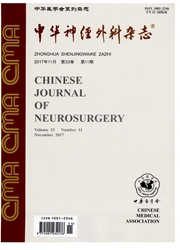

 中文摘要:
中文摘要:
目的应用磁共振相位对比法和计算流体力学软件对脑脊液循环系统进行数值模拟,分析脑脊液循环的动力学特性,并与临床实际相比较。方法用磁共振相位对比法测定2例正常人的中脑导水管脑脊液流速,并利用临床磁共振扫描图像建立脑脊液循环系统的数值模型,用Matlab软件及Enguage软件提取脑脊液循环系统的轮廓并进行网格划分,然后应用COMSOL Multiphysics软件进行脑脊液循环系统数值模拟及脑脊液动力学分析。结果通过模拟软件能模拟脑脊液循环存在的与心动周期相关的有规律的双向流动,表现为心脏收缩期向足侧流动,舒张期向头侧流动,各时相期计算出的速度与我们用磁共振相位对比法测定的在体速度相一致。同时脑脊液循环系统的数值模型能够计算得到颅内压力梯度、脑和脊髓组织固体应力等。结论脑脊液循环系统的计算机建模分析能无创性得到脑脊液循环的各项动力学量化指标,计算所得与临床实际相符合。本模型为进一步研究一些中枢系统疾病如交通性脑积水、Chiari畸形、脊髓空洞症等的脑脊液动力学机制奠定了基础。
 英文摘要:
英文摘要:
Objective To explore the circulation dynamics of cerebrospinal fluid (CSF) in central nervous system (CNS) using MR phase - contrast eine method and computational fluid dynamics softwares. Method Two normal volunteers' CSF flow velocity in cerebral aqueduct were measured. Their models were established from clinical MR images. Image edge of CSF flow circulation was extracted using Matlab and Enguage. The numerical simulation was processed with software of COMSOL Muhiphysies. Results The two -phase flow( eraniocaudal flow in systole and caudoeranial flow in diastole) of CSF circulation in accordance with the cardiac cycle were simulated. The calculated velocity in cerebral aqueduct was the same with that measured using MR phase - contrast cine method in vivo. The intracranial pressure gradient and solid stress of brain and myeloid tissue were calculated at the same time. Conclusions The numerical simulation of circulation dynamics of CSF could get dynamic factors un - invasively. The results are verified with clinical data. This might help to explain the mechanism of diseases of CNS such as communicating hydrocephalus, Chiari malformations and syringomyelia.
 同期刊论文项目
同期刊论文项目
 同项目期刊论文
同项目期刊论文
 Hydrogen-rich water protects against ischemic brain injury in rats by regulating calcium buffering p
Hydrogen-rich water protects against ischemic brain injury in rats by regulating calcium buffering p Quantitative computer tomography analysis of post-operative subdural fluid volume predicts recurrenc
Quantitative computer tomography analysis of post-operative subdural fluid volume predicts recurrenc 期刊信息
期刊信息
